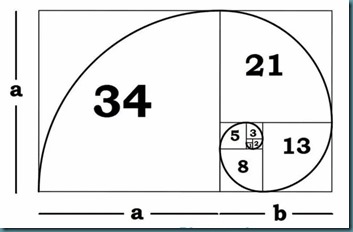
The Golden Ratio
“70-20-10” isn’t just a random set of proportions, but could have some mathematical underpinnings to its power. At the introduction of this blog, I noted that it was a variation of the “Pareto Principle”, but it also is very closely aligned to the “Golden Ratio”. Mathematically, the “ratio” is defined as “(1- √5)/2”. But behind that fairly simple equation lies a multitude of applications:
· “Some of the greatest mathematical minds of all ages, from Pythagoras and Euclid in ancient Greece, through the medieval Italian mathematician Leonardo of Pisa and the Renaissance astronomer Johannes Kepler, to present-day scientific figures such as Oxford physicist Roger Penrose, have spent endless hours over this simple ratio and its properties. … Biologists, artists, musicians, historians, architects, psychologists, and even mystics have pondered and debated the basis of its ubiquity and appeal. In fact, it is probably fair to say that the Golden Ratio has inspired thinkers of all disciplines like no other number in the history of mathematics.” — The Golden Ratio: The Story of Phi, the World’s Most Astonishing Number
When you distil the equation down to one its most basic geometric applications like the Fibonacci Spiral above, the first three numbers are: 62% (of the rectangle), 23%, 15%. Not quite 70-20-10, but close enough for me.
